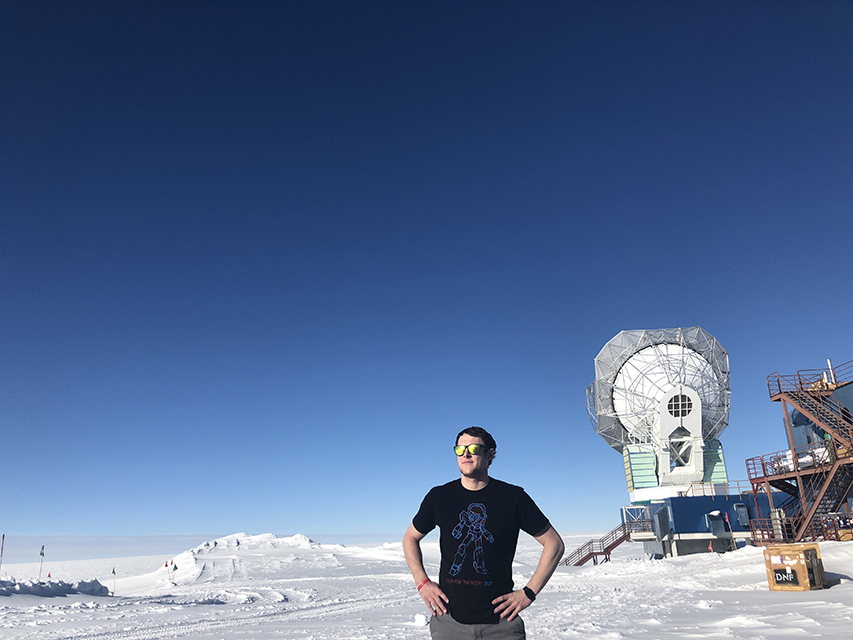lens
Life in a Protective Polar Bubble
Physics student worked at the South Pole when the pandemic was happening everywhere else
 PHOTO: Courtesy of Allen Foster
PHOTO: Courtesy of Allen FosterAllen Foster posed for a selfie in front of the South Pole Telescope before the looming six months of darkness. He described the -10F as balmy summer weather.
Allen Foster, a PhD physics student at Case Western Reserve, flew to Antarctica in January 2020 for a nearly yearlong job operating and maintaining the South Pole Telescope, a 75-foot-tall machine that captures images of faint light left by the Big Bang nearly 14 billion years ago. Within weeks, the world Foster left behind was battling the rapidly spreading novel coronavirus.
With no flights in or out of the South Pole because of extreme winter temperatures, and no access to television and its addictive 24-hour news cycle, Foster and his 41 co-workers lived in a frigid but protective bubble at the world’s southernmost point, no facial masks or physical distancing required. Think asked Foster about the experience—and returning in December to a life the pandemic made remote in a different way.*
What was it like knowing the world was fighting a deadly pandemic, while you were living in one of the few places where, at the time, not even COVID-19 could reach?Honestly, I felt detached. My only news source was a daily printout of The New York Times' Times Digest. My family would tell me how weird it was to go to the grocery store and see everyone in masks, and I didn’t really get that. On the way home, we had a layover in Los Angeles. Everyone was wearing masks and keeping their distance. It was an odd feeling and the first time I felt like I was part of it all.
Describe the telescope work.It required scheduling observations for the telescope and performing daily general maintenance such as greasing the gears to keep things running in the extreme winter temperatures. It’s a 1 kilometer walk from the station to the telescope. It never bothered me to bundle up and go outside with a windchill of -120F; it was just part of the job and part of the adventure. Plus, the beautiful views of the auroras and galaxy helped instill the excitement and feelings of adventure.
You won a half-marathon race running outdoors at the South Pole. Did you run there routinely?I ran outside a few times, but during winter, it’s tough. Mostly, I ran on a treadmill, so I am sick of treadmills and run outdoors every day now that I’m home.
How have you adjusted to life back in the U.S. amid the pandemic?I've drowned myself in work and running. So, I guess I've adjusted fine. I've had both vaccines. Avoiding people and wearing masks seems normal now.
You’re using data from the telescope for new research?Colleagues and I recently wrote a paper on newly discovered transient sources, which include highly luminous, hours-long stellar flares and months-long flares of an extra-galactic nature that are not yet fully understood. That might open a window into a new type of transient analysis, which is not the main science goal of the telescope research, but it’s an interesting offshoot. We have this data set. Let’s see what else we can do with it.
*This conversation was edited for length.





